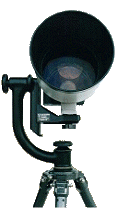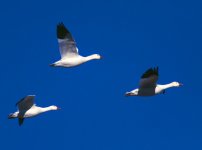ARCA SWISS VERSUS KIRK BALL & SOCKET HEADS
For many years I used Arca Swiss Ball & Socket heads with their superb quick release plate system. From my previous equipment list you can see that I owned three of them including the B1G that I used exclusively with my heavyweight Canon 600mm F4L telephoto lens.
I became increasingly aware, way back in the late eighties, that conventional pan and tilt heads were not the answer for the nature photographer. They are just too slow in use, which isn’t a problem when you are photographing a static subject but anything on the move – forget it! The reason is simply that you have to tighten no less than three screws to lock up the head completely and by the time you have done that invariably your subject is long gone. The secret of a ball head is that you only have to tighten one knob and you’re immediately in business. It’s quick, simple and above all extremely fast.
However, back then there was a problem with the Arca Swiss system and I soon discovered it. It was the quick release plates or perhaps I should say quick release plate. There was only one supplied with the head and, if you wanted more, which you obviously did, there was only one size available anyway. This is quite ridiculous because you need custom sized plates for optimal performance with every lens that has a tripod-mounting collar. Secondly if you used just the one plate changing it from lens to lens or camera body to camera body you would not have a quick release system – far from it.
I solved the problem by designing my own plates for each lens and camera body and having them made at a local engineering company. They were grossly expensive but they worked perfectly. All was well until I changed a lens or camera body, something we all do far too often. This invariably meant another trip to the workshop, time wasted until it was made and more expense. That was until I had another idea and one that I have relied upon to this day. Rather than have individual plates made each time I had metre-long lengths of aluminium bar dovetailed that I could then cut and drill to size at home as and when needed.
To-date Arca Swiss have never addressed the problem of the plates leaving it to one or two entrepreneurial companies in the States to manufacture and supply them direct. One such company is:
Kirk Enterprises, 333 Hoosier Drive, Angola, IN 46703-9336, Tel. 219 665 3670
www.kirkphoto.com
Visit their website and you will see that they manufacture an incredible range of plates and associated products for just about every camera or lens on the market. Many incorporate precisely contoured anti-twist flanges or a non-pivoting lip design, whilst others offer multiple screw fixing. These features keep the plates from twisting and assist rigidity.
Some plates also offer the ability of attaching a quite superb flash bracket that Kirks have designed for use with long telephoto lenses. This bracket makes it easy to add a catch light or fill-flash and, importantly, the flash remains in the same position in relation to the lens even when the photographer swings the camera body from one axis to the other.
So, at the time, I had just bought two new EOS1v camera bodies and having studied Kirks product range I decided the time had come for me to try out some of their gear. I placed my order over the web (very easy) and arranged to have the goods shipped, not here in Sussex but to Florida City. It was from there that my Florida tours began and I would have two weeks to give them a rigorous and extensive field test.
My findings were? ……………well I’ll tell you that next time. I will give you a clue however by telling you that my tour group of 8 photographers on having the products to see and handle at close quarters placed an order there and then totalling over $2500.00. Yes $2500.00 so that must tell you something!
To be continued.





